2016 Volvo V60 Cross Country: Car Seat Check

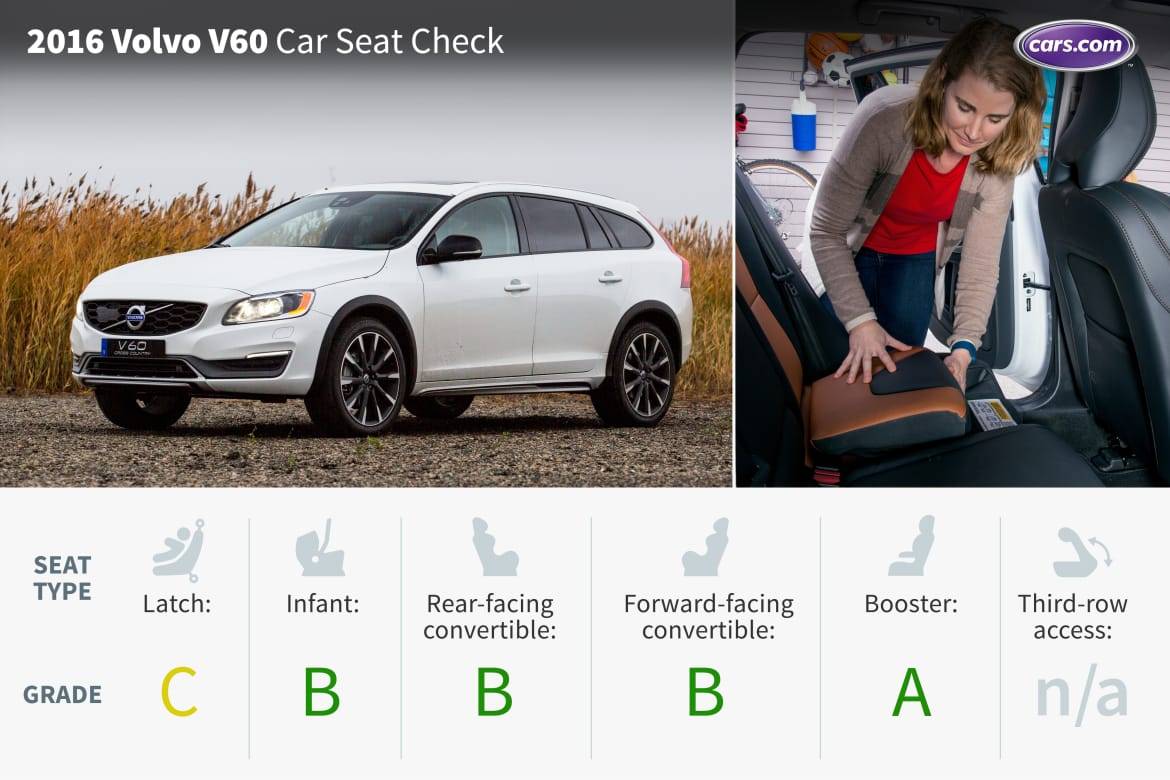
CARS.COM — Volvo’s small wagon did OK in our Car Seat Check, with ample room for our booster and forward-facing convertible. The rear-facing car seats didn’t fare as well in the V60. For this check, we tested the 2016 V60 Cross Country, an off-road-ready version of the wagon with more ground clearance and a rugged appearance. How did the Cross Country model fare? Its rear legroom dimensions are identical to the regular model, so we had the same issues with the rear-facing seats. We tested a T5 all-wheel-drive model with leather seats.
How many car seats fit in the second row? Two, but we came close to fitting three with our seat combination. Different car seats may work better than our setup.
What We Like
- We did not need to move the front passenger seat forward to fit the rear-facing convertible. Latch connection required some effort, however.
- The forward-facing convertible fit well.
What We Don’t
- The two sets of Latch anchors are buried about 1.5 inches into the seat bight; the leather cushions move out of the way somewhat, but you’ll need to work to connect to the anchors. It’s easier to connect with the infant’s hooklike connectors than the convertible’s larger, rigid units.
- The three tether anchors that are midway down the seatback are not labeled, and parents could mistakenly connect to the cargo floor hooks when installing a forward-facing convertible.
- We had to move the front passenger seat forward significantly to make room for the infant car seat. Our 5-foot-8-inch tester’s knees had about an inch of space before hitting the glove box.
- The booster fit well., however, the seat belt buckle is embedded in the bottom cushion. It sits close to the booster seat’s base, making it difficult for younger kids to buckle up independently.

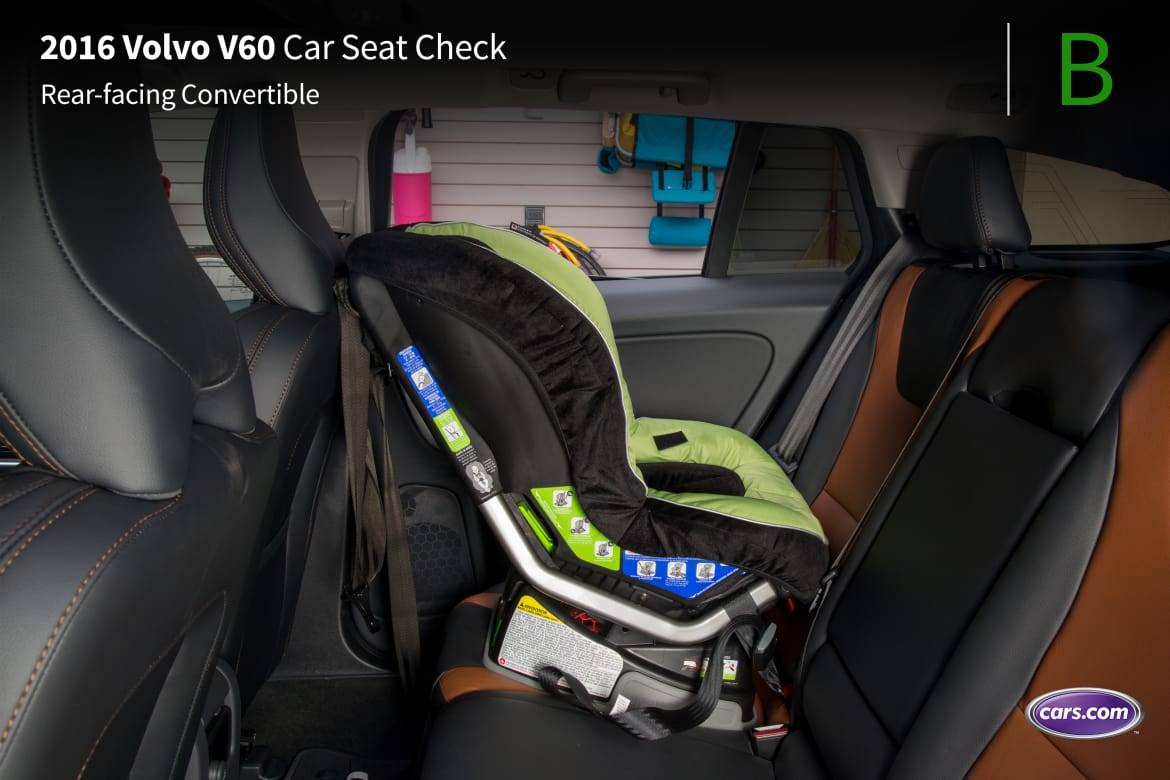
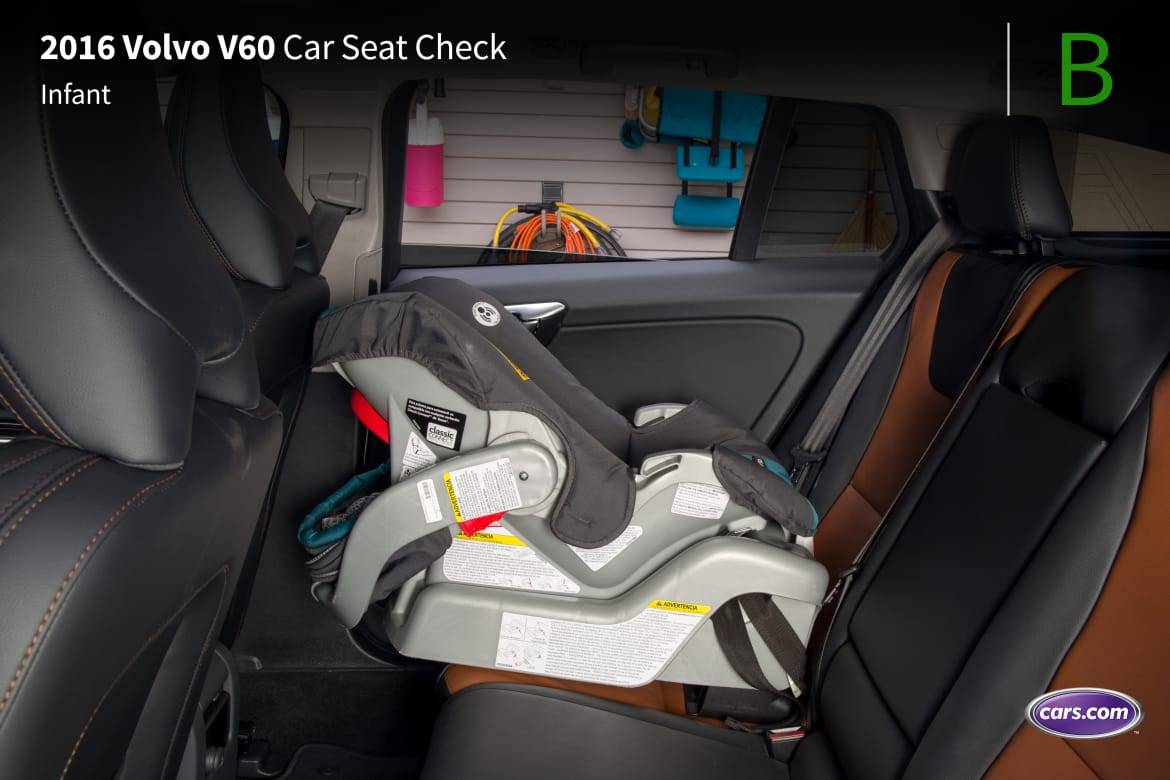

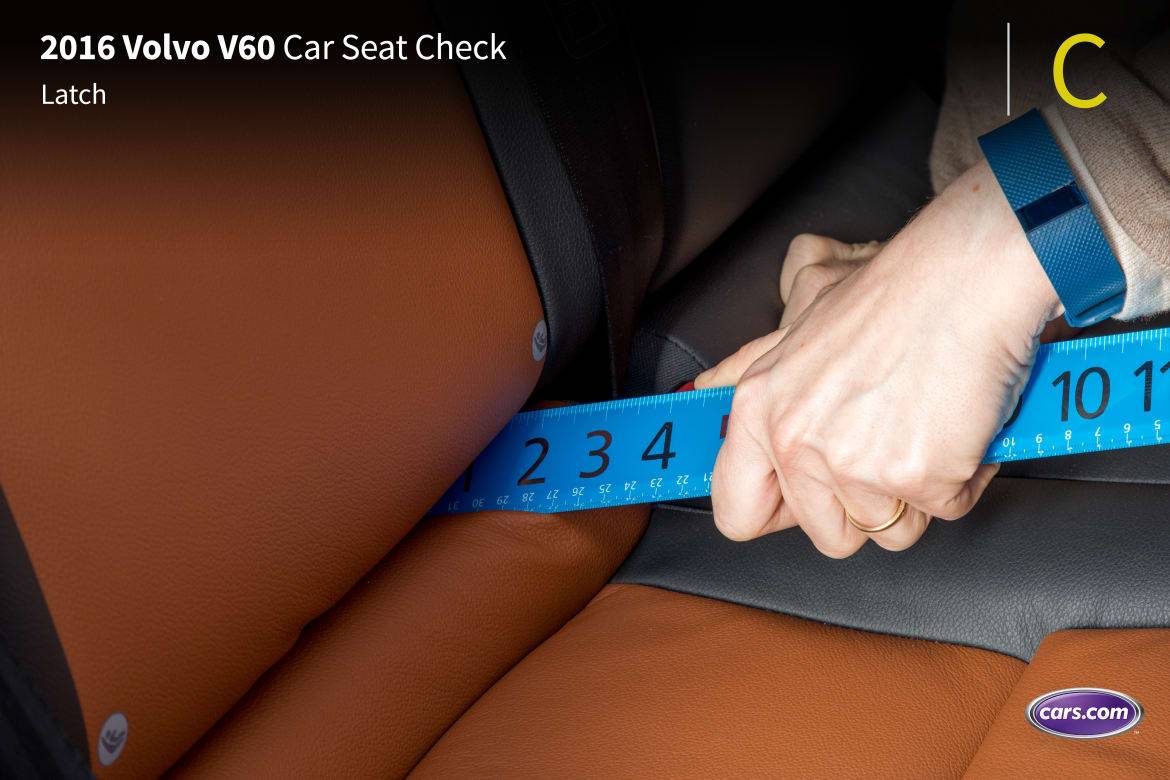







Grading Scale
A: Plenty of room for the car seat and the child; doesn’t impact driver or front-passenger legroom. Easy to find and connect to Latch and tether anchors. No fit issues involving head restraint or seat contouring. Easy access to the third row.
B: Plenty of room. One fit or connection issue. Some problems accessing third row when available.
C: Marginal room. Two fit or connection issues. Difficult to access third row when available.
D: Insufficient room. Two or more fit or connection issues.
F: Does not fit or is unsafe.
About Cars.com’s Car Seat Checks
Editors Jennifer Geiger and Jennifer Newman are certified child safety seat installation technicians.
For the Car Seat Check, we use a Graco SnugRide Classic Connect 30 infant-safety seat, a Britax Marathon convertible seat and Graco TurboBooster seat. The front seats are adjusted for a 6-foot driver and a 5-foot-6 passenger. The three child seats are installed in the second row. The booster seat sits behind the driver’s seat, and the infant and convertible seats are installed behind the front passenger seat.
We also install the forward-facing convertible in the second row’s middle seat with the booster and infant seat in the outboard seats to see if three car seats will fit; a child sitting in the booster seat must be able to reach the seat belt buckle. If there’s a third row, we install the booster seat and a forward-facing convertible. To learn more about how we conduct our Car Seat Checks, go here.
Parents should also remember that they can use the Latch system or a seat belt to install a car seat, and that Latch anchors have a weight limit of 65 pounds, including the weight of the child and the weight of the seat itself.http://blogs.cars.com/kickingtires/2013/09/how-carscom-conducts-car-seat-checks.html

News Editor Jennifer Geiger joined the automotive industry in 2003, much to the delight of her Corvette-obsessed dad. Jennifer is an expert reviewer, certified car-seat technician and mom of three. She wears a lot of hats — many of them while driving a minivan.
Featured stories
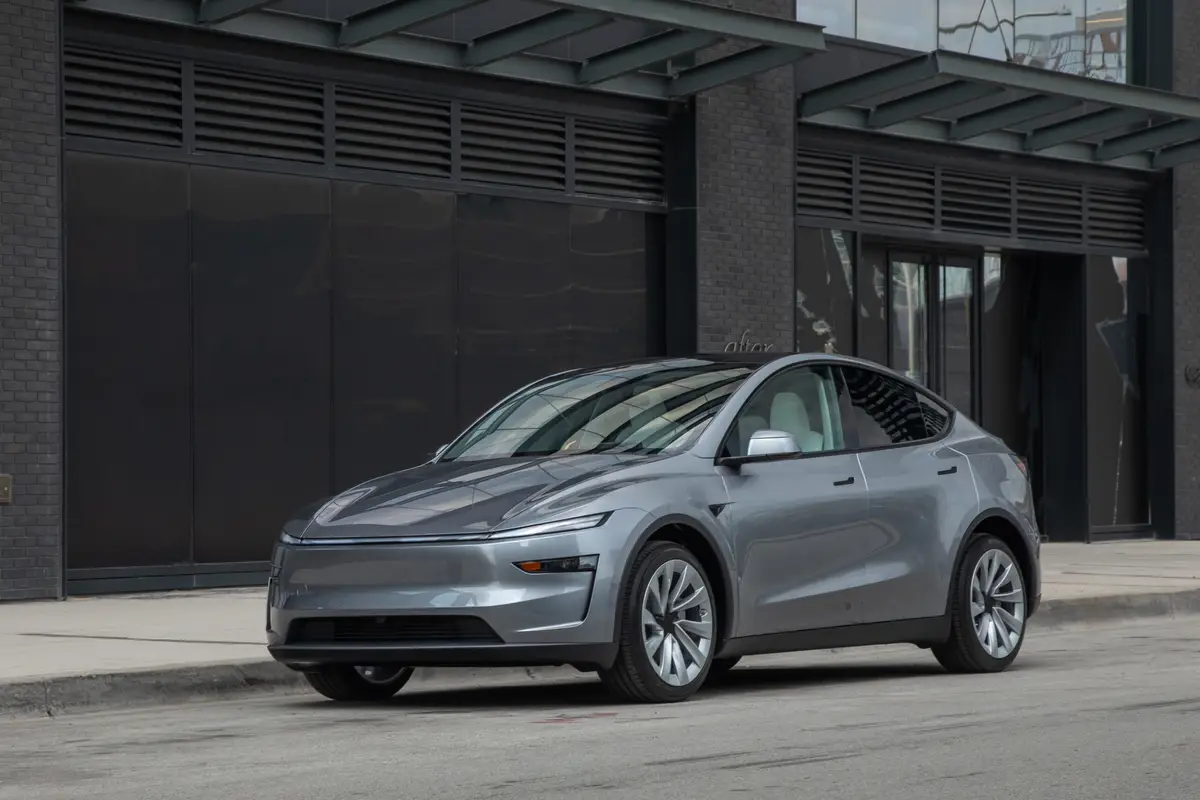
Should Tesla Model Y Owners Get the New 2026?

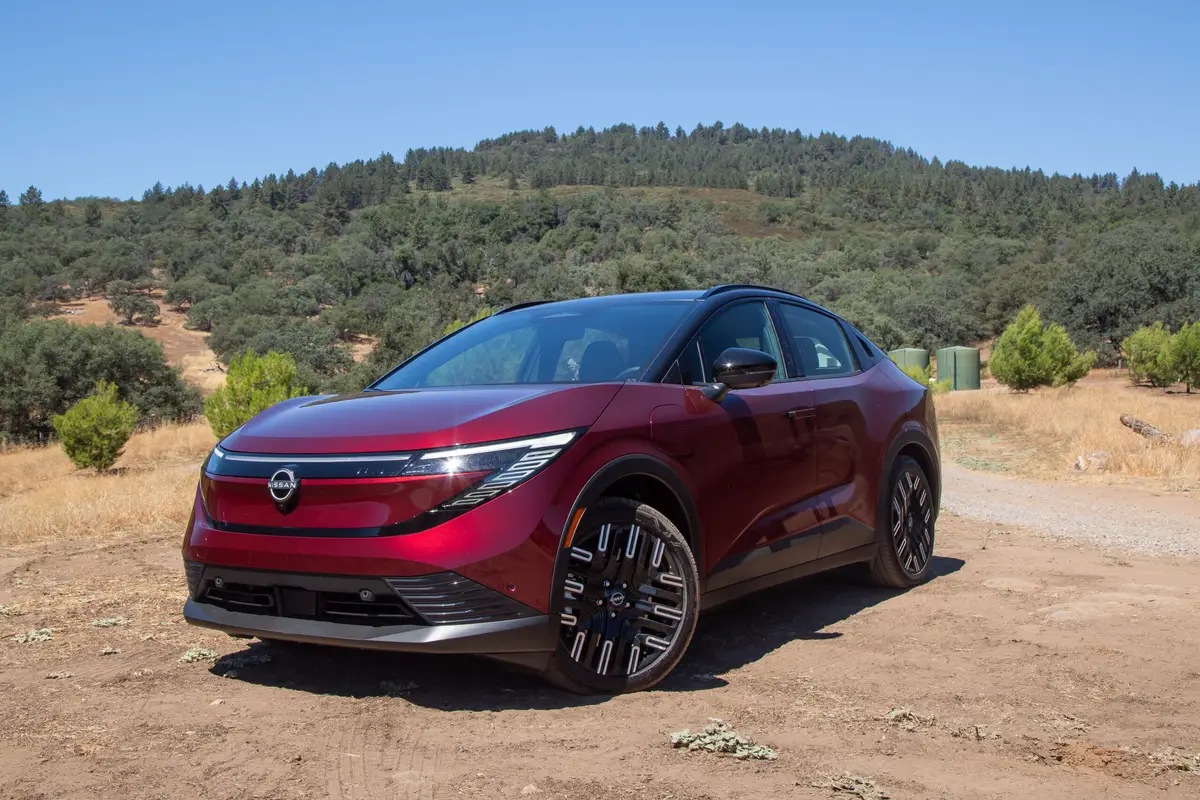
2026 Nissan Leaf Review: Value Victory








